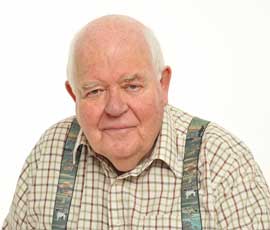OPINION: Elveden shows production and ecology mix

When William Cobbett rode his horse across East Anglia almost 200 years ago as part of his assessment of the state of English agriculture, he found himself in an area of sandy land that straddled the Norfolk/Suffolk border called Breckland. He was not impressed.
Indeed, when he published an account of the journey in Rural Rides he said he saw “two rabbits fighting over every blade of grass”.
Attempts were made by subsequent generations to grow crops there but usually without long-term success. Even during World War II when every acre was needed to produce food, leaders of the War Agriculture committee decided most of the Brecks were a lost cause and left them to the omnipresent rabbits.
By that time much of the area had, in any case, been planted with pine trees by the Forestry Commission to provide pit props for coal mines.
But one 9,100ha (22,500 acre) block that had been bought in 1894 as a shooting estate by the Irish Guinness family was transformed for farming from about 1927 by the 2nd Earl of Iveagh, Rupert Guinness. Over the next few years about half of the land that had not been planted with trees or left as heath was populated with nine dairy herds (mainly Jerseys), four beef herds, some sheep flocks and, later, two pig units.
The idea was to improve the soil and build up fertility by intensive grazing of livestock on lucerne and ryegrass leys. The estate was an oasis of production in an otherwise almost barren landscape. Encouraged by my father I wrote a school project on it in my early teens.
Then came irrigation and the estate was transformed again. Most of the livestock went; 130 miles of ring mains were installed and two huge reservoirs were dug. For although the land is still sandy and the annual rainfall inadequate to sustain intensive crops, the deep chalk under the topsoil is like a sponge containing any amount of water sufficient to irrigate the entire estate.
These days the land grows 650ha (1,600 acres) of onions, a similar area of potatoes, 300ha (740 acres) of carrots, 280ha (690 acres) of parsnips, and cereals – mostly malting barley and rye – on the rest. And land on the estate and around the area that was written off and almost abandoned for years has become one of the biggest and most efficient places producing vegetables and root crops in the country.
But through all the changes in management and cropping, the environmental character of Elveden has been maintained. For instance, stone curlews, those rare ground-nesting birds, are increasing in numbers more at Elveden than anywhere else.
When the reservoirs were dug and filled, the estate’s environmentalist recorded an additional 26 species of birds that had not been there before the water arrived. And it is estimated that the estate hosts well over 700 head of deer in its large forests. All of which proves that productivity and environmentalism can co-exist.
And so it was that on World Food Day last week, almost 100 of us gathered at Elveden to witness the estate being launched as the latest – and the biggest – LEAF demonstration farm.
The ceremonial tree was planted by TV Chef and North Norfolk Michelin Star restaurant owner, Galton Blackiston, who gets all his vegetables from the estate’s Kitchen Garden diversification and raves about their quality. And the present Earl of Iveagh glowed with pride at what his generation of the Guinness family are achieving on land once classed as “virtually worthless”.
David Richardson farms about 400ha (1000 acres) of arable land near Norwich in Norfolk in partnership with his wife, Lorna. His son, Rob, is farm manager.
What do you think about farming’s green agenda? Have your say on our website forums.
